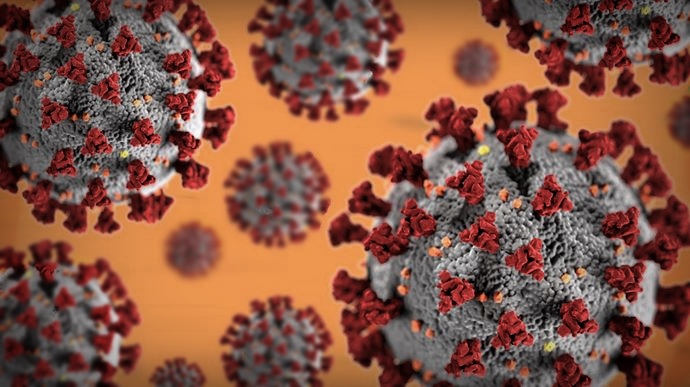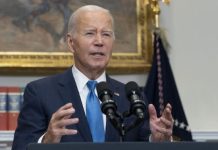April 27 (UPI) — Disruptions caused by the coronavirus pandemic are hampering children’s immunizations against other diseases, the World Health Organization said Monday as the global caseload surpassed 3 million.
In his regular briefing from WHO’s headquarters in Geneva, Switzerland, Director-General Tedros Adhanom Ghebreyesus said polio vaccination campaigns around the world have been put on hold due to travel restrictions and parents’ frequently misinformed concerns about COVID-19.
“The tragic reality is that children will die as a result,” he said, noting that at least 21 low- and middle-income countries are already reporting vaccine shortages as a result of border closures and disruptions to travel.
Meanwhile, Ghebreyesus said even as the pandemic is slowing down in the current epicenters of Europe and the United States, concerns are building about areas of the world so far relatively unaffected by the pandemic, including Africa, Eastern Europe, Latin America and some Asian countries.
“As in all regions, cases and deaths are under-reported in countries in these regions because of low testing capacity,” he said.
The number of cases worldwide surpassed 3 million Monday, according to Johns Hopkins University. The United States has the highest number of cases with about 973,000. The death toll surpassed 200,000 Sunday.
In Britain, Health Secretary Matt Hancock reported 360 new coronavirus deaths in hospitals, raising the country’s overall toll to more than 21,000. The figures were released hours after Prime Minister Boris Johnson warned against easing lockdown restrictions in his first public speech since he was hospitalized with the disease.
Johnson said Britain faces its greatest challenge since World War II, and though there are signs of “passing through the peak” of the outbreak now is not time to lift restrictions, which are to be reviewed May 7.
“This is the moment when we have begun together to wrestle it to the floor,” he said. “So, it follows that this is the moment of opportunity, this is the moment when we can press home our advantage and it is also the moment of maximum risk,” he said in a press conference.
Johnson, who was discharged from the hospital on April 12, said he understands the economic consequences of the lockdown but must assess the potential of a second spike of the coronavirus, which has infected more than half a million people and killed more than 20,000 in Britain.
“I want to get this economy going as fast as I can but I refuse to throw away all the effort and the sacrifice of the British people and to risk a second major outbreak and huge loss of life and huge overwhelming of the [National Health System],” he said. “And I ask you to contain your impatience because I believe we are coming to the end of the first phase of this conflict.”
In New Zealand, Prime Minister Jacinda Ardern said the nation has eliminated undetected community spread of COVID-19 but warned the public to stay vigilant to prevent a resurgence.
“There is no widespread undetected community transmission in New Zealand. We’ve won that battle. But we must remain vigilant if we are to keep it that way,” she said during a press conference on Monday.
New Zealand is preparing to downgrade from its highest Alert Level 4 to Alert Level 3 at midnight, allowing for some businesses to reopen, schools to prepare to hold classes and some easing for social distancing guidelines.
Ardern said the number of cases would have been much higher without the lockdown and the drastic measure allowed New Zealand to avoid “the worst” of the pandemic.
“It is not and cannot be a return to pre-COVID-19 life. That day will come but it is not here yet. To get there, our team of 5 million needs to have zero tolerance for cases to complete our goal of eliminating the virus at level 3,” she said.
In Switzerland, the Federal Council on Monday began to ease restrictions, allowing hospitals to resume medical procedures and medical and massage practices, hairdressers, cosmetic studios and other similar businesses to reopen to the public.
“In taking steps to ease these measures, [the Federal Council] is pursuing two aims: It wishes to continue to protect the health of the population, particularly of those at especially high risk. At the same time, it wants to limit the damage to the economy,” the Federal Office of Public Health said in a statement.
Social distancing rules and a ban on gatherings will remain in place. As of Sunday, the country had nearly 30,000 cases and more than 1,330 deaths, the health department said.
Italy, France and Spain have also said they are seeking to ease restrictions.
In Iran, which has the eighth highest number of cases, President Hassan Rouhani said Sunday religious sites, mosques and holy shrines can soon reopen, though the date has yet to be decided, semi-official Press TV reported. The country has been divided into three color-coded zones — white, yellow and red — based on infections and deaths.
“This is the first step in opening up religious sites that are of great interest to the people, and God willing, we hope that the white areas will expand day by day and we will have better conditions” while the public observes the guidelines, Rouhani said.
Japan on Monday barred travelers from 14 additional countries, including Russia, Ukraine, Belarus, Saudi Arabia and Qatar to prevent further spread of the virus, national broadcaster NHK reported.
Japan has now canceled visas for 87 countries until the end of May.
The Bank of Japan announced an enhanced monetary easing plan to combat the economic effects of COVID-19. It said it’s increasing purchases of CP, corporate bonds and Japanese government bonds.
“The bank will take these measures with a view to doing its utmost to ensure smooth financing, such as of financial institutions and firms, and maintaining stability in financial markets,” it said.






